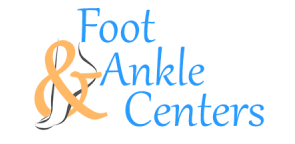10 Easy-to-Spot Signs You're Suffering from Flat Feet
Flat feet, aka pes planus or fallen arches, are a widespread foot condition caused when the arches of the feet collapse, leading to the whole foot touching the ground. While it's normal in infants, it should disappear as individuals age.
Common symptoms include foot pain and stiffness, although some individuals will not experience any symptoms. Learn about the other easy-to-spot signs you're suffering from this condition and discover how to treat it.
What are Flat Feet?
It occurs when the whole foot touches the ground. This collapse of the arches removes the key structure responsible for supporting your body weight and absorbing the shock of each step. The result is a flatter, wider foot that suffers from an inward roll (overpronation) when walking or running.
There are three types of it:
Flexible flatfoot is the most common type in which the foot arches appear only when you lift them from the ground. It usually starts in childhood and doesn't cause pain.
Tight Achilles tendon can cause discomfort while walking or running, as it connects the heel bone to the calf muscle. Consider using specialized insoles for flat feet to alleviate the pain.
Posterior tibial tendon dysfunction is acquired in adulthood when the tibial tendon becomes injured, swollen, or torn.
According to the 2012 National Foot Health Assessment, 8% of adults in the US aged 21 and older have this foot condition — a further 4% have fallen arches.
10 Signs You're Suffering From It
Here are the common flat feet symptoms:
1. Foot pain
It may be almost anywhere in the foot, depending on which part of the arch is dropping and which tendons are stretched or injured. Pain may involve the whole foot or ankle or just parts of it.
It is typically felt inside the ankle, on the outer edge of the foot, or in the arch itself. The altered foot placement on the ground can lead to pain in the calf, knee, thigh, hip, or spine.
2. Foot stiffness.
3. Foot swelling
4. Uneven wearing of shoes
Check the soles of your shoes for uneven wear. If one side of the sole is more worn than the other, it's the sign. Additionally, consider exploring the best shoes for flat feet to provide proper support and alleviate any discomfort.
5. The sensation of foot flatness or imbalance
Particularly if only one foot is affected.
6. Knee or hip pain
It can cause leg misalignment, leading to knee or hip pain.
7. Lower back pain
The misalignment caused by the foot condition can also affect the lower back, causing pain and discomfort.
8. Arch pain
People with this condition may experience pain in the arch of their foot, particularly after standing or walking for long periods.
9. Tired or achy feet
After standing or walking for long periods.
10. Difficulty standing on your toes.
If you are experiencing any of these symptoms, seeking medical attention to determine the underlying cause and developing an appropriate treatment plan is essential.
How to Fix Flat Feet
Treatment is about supporting and strengthening the foot through custom orthotics, exercises, and shoes. If these treatments fail to deliver relief, surgery is the final option.
Common orthotics include:
Fitted insoles are designed to provide arch support and relieve pressure. They'll also prevent the tendency for feet to roll inwards or outwards.
Ankle braces are beneficial when the posterior tibial ligament is inflamed.
In general, podiatrists use orthotics to correct issues such as overpronation or improve the alignment of your feet, hoping to reduce pain and discomfort. Speak to your podiatrist about which orthotic is best for your symptoms.
Best Running Shoes for Flat Feet
Choosing shoes is a key aspect of treating this condition. You want shoes with plenty of arch support and cushioning, which help absorb shock and reduce pain. Running, in particular, is challenging. Popular brands include New Balance, Brooks, and Asics — look for a running shoe with a thick, cushioned sole and a reputation for quality and durability.
Flat Feet Exercises
In addition to orthotics and proper footwear, exercises help treat the condition. Strengthening your feet and leg muscles can improve their alignment and reduce pain. Some practical exercises include:
Calf stretches
Stand facing a wall with your hands against it. Step one foot back and press your heel into the ground while keeping your back leg straight. Hold for 15-30 seconds, then switch legs and repeat.
Toe curls
Place a towel on the ground and use your toes to scrunch it up. Repeat for 10-15 reps.
Arch lifts
Stand with your feet hip-width apart and press down into the ground with your big toe, lifting your arches. Hold for a few seconds, then release.
Flat Feet Surgery
In some cases, foot surgery may be necessary to correct it. It is typically only recommended if other treatments have been ineffective or if the feet are causing significant pain and disability.
It may involve fusing the bones in the foot to improve their alignment or repairing damaged tendons and ligaments. Your podiatrist can help determine if surgery is right for you.
Book a Consultation for Your Foot Condition
If you're experiencing any symptoms of this condition, addressing them sooner rather than later is essential.
At Foot and Ankle Centers, our experienced podiatrists can help you find the right treatment plan to alleviate your pain and discomfort. Don't let flat feet hold you back — book a consultation with us today to get started on better foot health.


